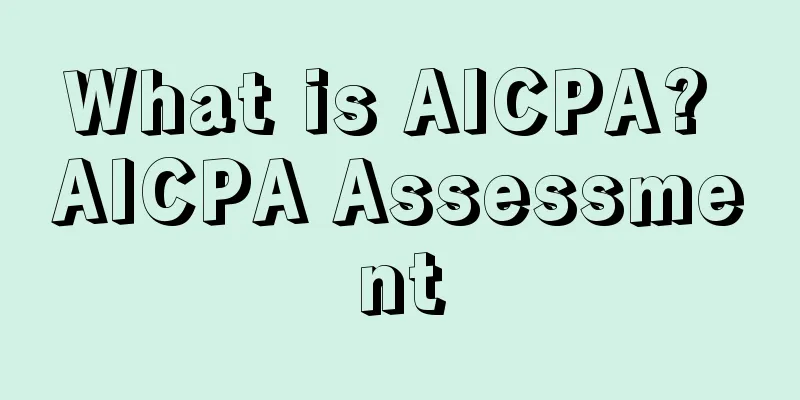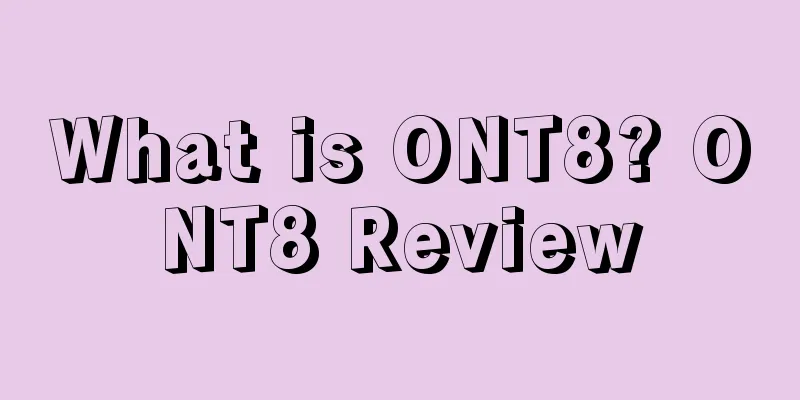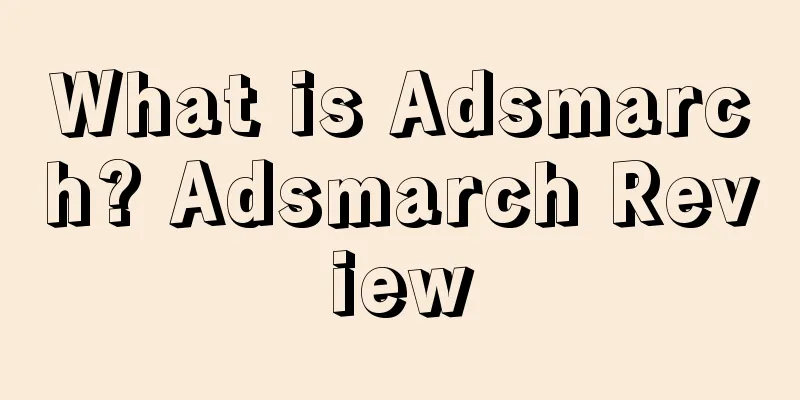What is AICPA? AICPA Assessment

The American Institute of Certified Public Accountants (AICPA) was founded in 1887 and is one of the largest professional accounting associations in the world. It currently has approximately 412,000 members in 144 countries around the world. In 2012, AICPA and the Chartered Institute of Management Accountants (CIMA) jointly launched the Chartered Global Management Accountant (CGMA) qualification, and AICPA members and CIMA members can automatically become CGMA members. Together with the Certified Management Accountant (CMA) and the Chartered Financial Analyst (CFA), they are known as the three major international gold certifications in the field of accounting in the United States. The American Certified Public Accountant is the only professional license with the right to sign in the United States. Full name American Institute of Certified Public Accountants Founded in 1887 Chinese American Institute of Certified Public Accountants Website https://www.aicpa.org/AICPA Exam Subjects1. Audit and certification: including knowledge of audit procedures, generally accepted auditing standards and other attestation-related standards, as well as the skills required to perform entrusted audits. 2. Financial accounting and reporting: includes knowledge of accounting standards for businesses, non-profit organizations, and government organizations, and the skills required to apply them. 3. Regulations: including knowledge of federal tax laws, professional ethics, professional and legal responsibilities, and commercial laws, as well as the skills required to apply them. 4. Business environment: including basic knowledge of general business environment and theory, understanding the basis of accounting treatment of commercial transactions and the skills required for its application. Development HistoryIn August 1887, New York State law formally recognized the American Institute of Public Accountants. In 1896, the New York legislature passed the "Act to Regulate the Profession of Public Accountants," which first introduced the title of "Certified Public Accountant" (CPA). In October 1905 and October 1936, AICPA merged with the American Institute of Public Accountants and the American Institute of Certified Public Accountants, respectively. In 1916, it was renamed the Institute of Public Accountants and had 1,150 members at the time. In 1917, it was renamed the American Institute of Accountants. In 1917, AICPA published the "Method of Preparing Balance Sheets" in the form of a Federal Reserve Board announcement, which became the first accounting standard with "authoritative support". In 1932, the Committee on Accounting Procedure was established, marking the AICPA's systematic study of accounting standards. In 1936, the AIA merged with the American Society of Certified Public Accountants, which had been founded in 1921. In 1957, it was renamed the American Institute of Certified Public Accountants. In 1959, the Accounting Principles Board replaced the Accounting Procedure Committee and continued to develop and publish accounting standards. Since 2004, the CPA exam has been administered by computer. The development history of CPA law in the United StatesIn 1896, the New York State legislature passed the first law in the United States to establish the CPA system, laying the foundation for other states to later regulate the CPA profession. In 1916, the American Institute of Certified Public Accountants, the predecessor of the American Institute of Certified Public Accountants, promulgated the first model law in the United States to regulate the practice of certified public accountants. In April 1980, the National Association of Accountancy Boards of America issued a model CPA law that reflects the legislative policies developed over the years. Since the members of the National Association of Accountancy Boards of America are the state boards of accountancy, which are responsible for implementing existing laws and making recommendations to state legislatures, it is more appropriate for the National Association of Accountancy Boards of America to formulate legal policies related to CPAs, which should be recognized by all parties and used as a reference. In January 1983, the American Institute of Certified Public Accountants and the National Association of Boards of Accountancy jointly established a committee to study and formulate a new CPA model law, the Uniform Accounting Act of 1984. This law is a forward-looking law that has received support not only from the CPA industry but also from the public. Later, after several revisions, the law was renamed the "Uniform Accounting Act". Auditing StandardsIn 1939, the AICPA established the Auditing Procedure Committee. This was a direct response to the McKesson & Robbins case. The committee made several recommendations on the review of inventory and accounts receivable, the hiring of independent auditors, and the format of audit reports. On this basis, it formed Auditing Procedure Bulletin No. 9, Expansion of Auditing Procedures. In 1948 alone, the committee issued 10 generally accepted auditing standards. In 1972, AICPA established the Auditing Standards Executive Committee to replace the Auditing Procedure Committee. In 1977, the Auditing Standards Committee was reorganized into the Auditing Standards Board. In view of the public's criticism of the auditing of American certified public accountants, the AICPA established the Accounting Firm Department in 1977, extending professional self-discipline from individuals to entities. Later, it was divided into two parts, namely the Public Company Department (SEC Practice) and the Private Company Department (Private Companies Practice). They provide organizational guarantees for peer review. Examination Standard DevelopmentIn 1959, AICPA established the Follow-up Vocational Education Department, and vocational education gradually became an important function of the association. In 1971, the AICPA passed a resolution urging state CPA associations to require practicing CPAs to receive continuing education. By 1987, 48 states had established this mandatory requirement. In January 1987, the AICPA passed a resolution by unanimous vote: starting from the year 2000, the CPA education requirement will be raised from four years to five years, or 150 credits. In 1990, AICPA required all its members to complete 120 hours of continuing education within three years, with no less than 20 hours per year. AICPA in ChinaApplication conditions Guam is the first choice for candidates from China and even Asia to take the AICPA exam Bachelor's degree, 120 total credits, 24 accounting credits, including 3 financial accounting credits, 3 auditing credits and 3 taxation credits; 24 business credits, including 6 economics credits, 3 finance credits and 3 business law credits. The exam is available every month except March, June, September, and December. Please note that the exam cannot be taken on a U.S. national holiday, and the exam is not available on Saturdays and Sundays. Advantages 1. The value of the certificate is improved and its recognition is enhanced The American Certified Public Accountant certification body is the AICPA, the world's largest and most influential accounting organization, with a group of more than 300,000 accountants. It is likely to influence global accounting development trends to a certain extent. As international accounting standards are constantly updated, the influence of US GAAP is also increasing. 2. AICPA certificates are recognized more widely Among the world's top 500 companies, American companies account for more than 30%. They are basically spread all over the world, and their economic network is very developed, so the certificate is applicable to almost more than 100 countries in the world. 3. The examination cycle is short and the effect is obvious Relatively speaking, there are still advantages in the four subjects of the AICPA exam, namely auditing, financial reporting, business theory and environment, and laws and regulations. Except for the months of March, June, and September and holidays each year when the exams cannot be taken, as long as you are fully prepared, you can apply for the exam at any time. On Gaodun Tribe, it takes as fast as four months to obtain an AICPA certificate, and you can pass one subject per month on average! For some financial executives, AICPA can directly lead to a qualitative leap, such as common "routines" such as promotion and salary increase, but the most important thing is the inexhaustible confidence and the courage to compete when facing customers and opponents. 4. The exam focuses more on improving professional standards and cultivating abilities, rather than simply taking exams AICPA exam preparation is very helpful for financial professionals to make self-summary and comprehensive understanding. After the entire preparation period, there will be great improvements in both financial knowledge and skills. The exam focuses on the combination of theory and practical operations, rather than memorizing all the dead principles. 5. AICPA Association includes overseas elites The overall organization is huge, basically including financial bigwigs from home and abroad. Everyone in the financial circle knows them, which is also a great help in accumulating personal connections. |
>>: What is AMZ123? AMZ123 Review
Recommend
Malicious hidden negative reviews are found! What should I do if someone is behind this?
Recently, most of our attention has been attracte...
Walmart uses various strategies to keep prices low to fight inflation
Walmart has implemented various strategies to keep...
How can Amazon sellers increase their average order value?
Average order value (AOV) is one of the most impor...
What is Reno International? Reno International Review
Ruinuo International 11 focuses on foreign trade w...
Major update to entry standards! TikTok Shop has relaxed the threshold for cross-border merchants in the US, and now supports 9 domestic and foreign e-commerce platforms!
As the Black Friday promotion approaches, in orde...
What is Expeditors International? Expeditors International Review
Expeditors is a world-renowned logistics company w...
If you want to sell baby products on Amazon, choose these 10 products!
Preface For cross-border e-commerce sellers, the ...
What is KC certification? KC certification review
In order to enable consumers to more clearly under...
What is Teikametrics? Teikametrics Review
Teikametrics is an American advertising and market...
Amazon secretly changes AZ complaint policy? Official collection insurance
Today, foreign media broke the news that Amazon h...
The US government wants to remove Amazon’s own products from the shelves! ?
focus on On Amazon, not only do we third-party se...
What is Backsty? Backsty Review
Backsty APP is one of the tools commonly used by E...
Wish launches flat-rate shipping service for US customers
It is learned that on February 1, Wish announced t...
Some sellers have received emails stating that some Amazon sites will charge additional advertising management fees starting from August 15?
Anonymous user My C position 1. Some sites will ch...
Enforcement! Multiple categories of Amazon products will face sales ban!
Normal, once there is data abnormality, such as s...









